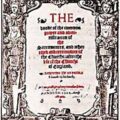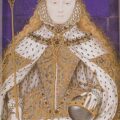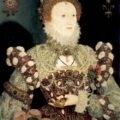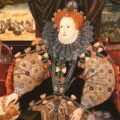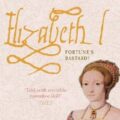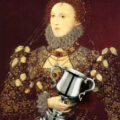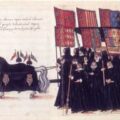On this day in Tudor history, 8th May 1559, Queen Elizabeth I gave her approval to the Acts of Uniformity and Supremacy.
The Act of Uniformity was incredibly important and it reflected the queen’s wish to follow a middle road where religion was concerned.
But what was this act? What did it establish? What did Elizabeth want for England and what happened?
Find out in this video…
Transcript:
Today’s video is based on an article I wrote for the Tudor Society a few years ago on the Acts of Uniformity and Supremacy. For it was on this day in Tudor history, 8 May 1559, just under six months after her accession, that Queen Elizabeth I gave her approval to these acts which had been passed by Parliament on the 29th April 1559.
The Act of Uniformity made Protestantism England’s official faith, established a form of worship which is still followed in parish churches in England today, and showed the country that Elizabeth was bent on following a middle road where religion was concerned. The monarch was Head of the Church again, and still is today.
Elizabeth I was a keen Protestant, having been influenced by her stepmother, Queen Catherine Parr, a zealous reformer, in her formative years in the 1540s. But Elizabeth was no Puritan or Calvinist, and she was against clerical marriage.
Elizabeth had seen the damage that religious divisions had done to the country in her half-sister Queen Mary I’s reign and was intent on bringing peace and tolerance to England once again. Although she herself had a Protestant faith, she wanted to create a religious settlement that Protestants and Catholics would be happy with, a halfway house, a middle of the road settlement that would allow her subjects to live in peace with each other but which would also allow her to restore Protestantism as the country’s faith and restore royal supremacy so she could be head of the Church. Elizabeth declared that she had “no desire to make windows into men’s souls” and she believed that “there is only one Christ, Jesus, one faith, all else is a dispute over trifles”, and her religious settlement was her attempt to show this.
Both Calvinists and Catholics criticised the act, but Elizabeth knew the importance of stability and knew that this religious settlement would achieve it.
So, what did Elizabeth’s middle of the road settlement consist of?
- It made Mary I’s repeal of Edward VI’s Act for Uniformity and Administration of the Sacraments null and void – Elizabeth’s Act of Uniformity reinstated the use of the English Book of Common Prayer from 1552. All services were to follow the order of service set out in this book and be in English.
- Elizabeth was made Supreme Governor of the Church of England.
- The Catholic mass was banned.
- Everybody was to attend church on Sundays and holy days or be fined 12 pence.
- There were measures or punishments for clergymen who did not stick to the Act and the Book of Common Prayer.
- And regarding church ornaments, the act stated “that such ornaments of the church, and of the ministers thereof, shall be retained and be in use, as was in the Church of England, by authority of Parliament, in the second year of the reign of King Edward VI”.
Here’s link to read the full text of the Act of Uniformity 1559 – http://history.hanover.edu/texts/engref/er80.html .
Although many people see Elizabeth I’s religious settlement as too middle of the road and a sign that Elizabeth’s faith was weak, I think that Elizabeth had to set her personal faith and feelings to one side and act in the best interests of her country. The Marian persecutions and the way that England had bounced from Protestantism to Catholicism had caused much unrest and instability, and Elizabeth had to deal with this. Obviously, she did have to take certain measures against the Catholics later in her reign, following her excommunication by the pope and when she was dealing with plots against her and imminent invasion from Spain, but the start of her reign was all about moderation and tolerance. If only she’d been able to continue in that way.
